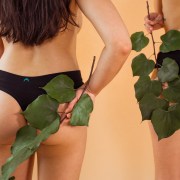Zero waste periods: the pros and cons of menstrual underwear (+ 6 brands to consider)
There are three main product types when it comes to having a zero waste period: menstrual cups, reusable pads, and period underwear. I’ve tried all three. I was a very early adopter of the menstrual cup, buying my first one back in 2003, but I was a definite latecomer to the period pants idea – I only got my first pair a couple of years ago.
Today I wanted to answer some questions about period underwear: do they work, how do you look after them, and what are the pros and cons compared to other products.
This post contains affiliate links. You can read more about what this means at the bottom of the post.
If you’re just after a recommendation, I use and am very happy with Modibodi (this is an Australian site, or try Modibodi UK).
I’ve listed some good alternative brands at the end of the post, if you like to shop around.
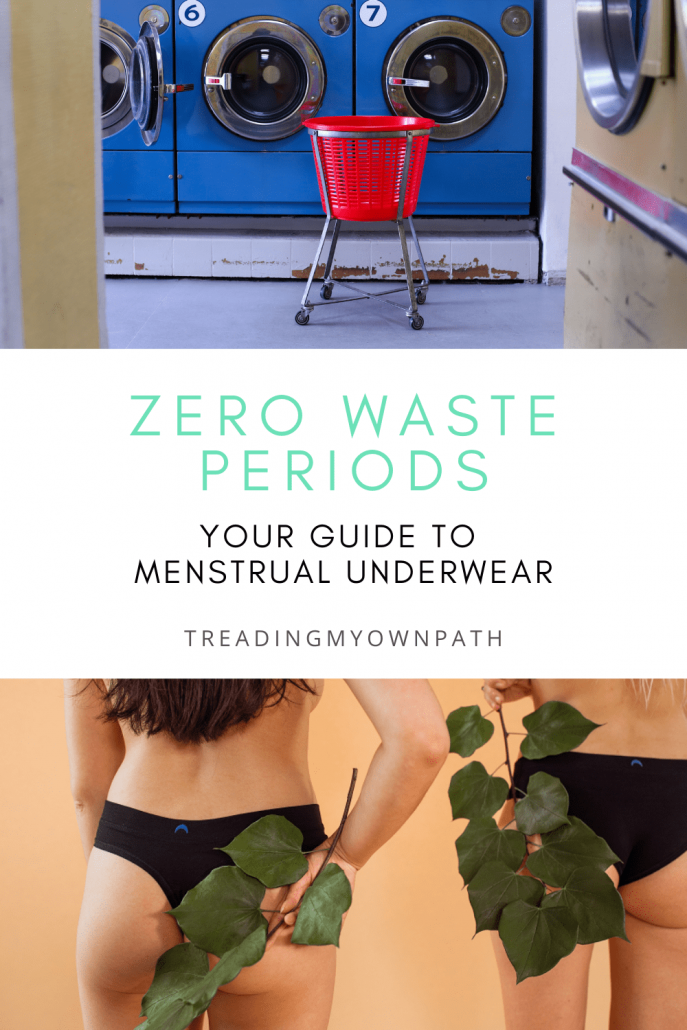
Period underwear: how does it work
Period pants are reusable and leak-proof underwear which replaces the need for single-use period products (as well as incontinence products).
The gusset is made of layers of materials that resist stains, wick moisture and absorb liquid. It’s built into the underwear in a way that isn’t particularly noticeable – period underwear looks like regular underwear. You might be able to feel that the fabric is slightly thicker when holding a pair, but when you’re wearing them, you truly can’t feel a thing.
Most brands have products with varying absorbency to accommodate different flows. In the Modibodi range, I have light-moderate (absorbancy is 10ml which is 1-2 tampons or 2 teaspoons), moderate-heavy (absorbancy is 15ml, the equivalent of 2-3 tampons or 3 teaspoons) and the heavy-overnight (absorbancy is 20ml, the equivalent of 3-4 tampons or 4 teaspoons) range.
Other brands make even more absorbent options.
Compared to my overnight pad, the overnight pants are much thinner and far more comfortable.
How long you can wear them will depend on your flow, but in most cases they can last 8-10 hours and up to 24 hours (should you want to wear the same underwear for that long).
What does menstrual underwear feel like to wear?
The thing that really got me over the line to being a fan is how comfortable they are. I can only talk about Modibodi as its the only brand that I’ve ever worn, but they are super comfortable. The fabric is soft, the elastic doesn’t dig in, there’s no weird plastic crackling noises or awkward pad sensation – and there’s nothing to slip out of place.
They absorb moisture really well, and don’t feel wet or sticky. Because the gussets are black (even if you choose a light fabric or pattern) they don’t look much different when used to when they were clean, and they don’t stain.
(In comparison a lot of pads are white. Black is a good design choice, in my opinion.)
How do you look after period underwear?
Easy! They are machine washable, and you just pop them in the washing machine. Most brands suggest using a cold cycle. (I’ve also on occasion put my Modibodi pairs in the 30°C cycle and they were fine, but fabrics do tend to last longer when you follow the instructions.)
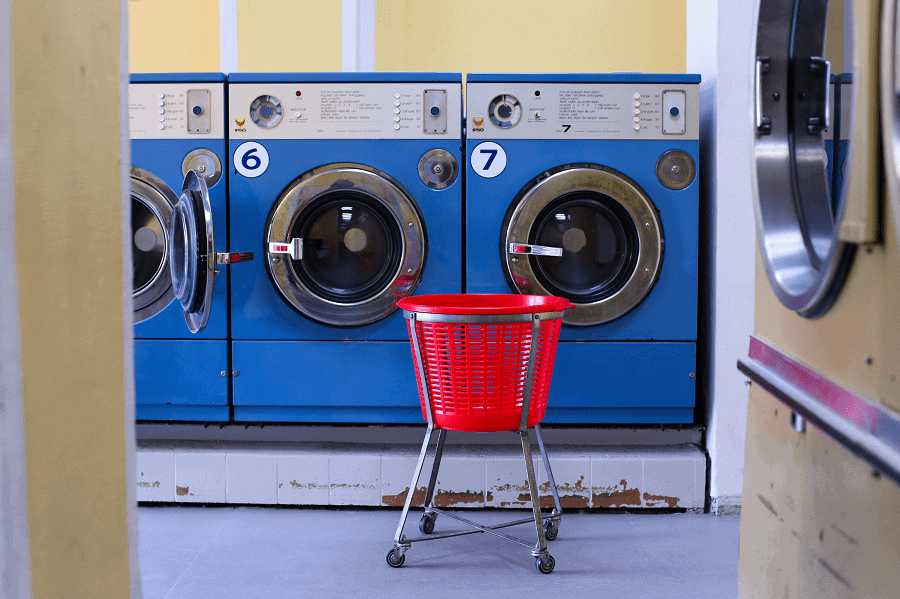
Prior to washing (and ideally as soon as possible after you’ve finished wearing them) just rinse them with cold water until the water runs clear. No need to soak, hurrah!
I tend to rinse and then pop in the washing machine ready to go (which is how sometimes they end up on a 30°C cycle.) I always line dry everything, so they go on the line. Dryers shorten the lifespan of your clothing.
How long does period underwear last?
You can expect your period underwear – if looked after properly – to last two to three years. I’m always one to push these things as far as possible, and two years in my original pairs are still fine and working well.
How many pairs do I need?
That depends if you’d like to use them on their own, or in conjunction with pads or a menstrual cup. I use a menstrual cup, so I use the menstrual underwear for when I’m expecting my period to start and I’m going to be far from home, for nights and for exercise (in conjunction with my cup – I have a heavy flow and it can fill up and leak) and on the last day or two.
I started out with two pairs along with my cup, and it did mean needing to launder them mid-cycle. If you’d like to use in conjunction with a cup, you can manage with two pairs but three or four would be better.
If you’d like to use them on their own, it’s going to depend on how often you’d like to launder them. I think you could get buy with five pairs if you’re organised, but you might prefer more. You can always use a pad if you get caught out with no clean laundry.
Pros and cons to menstrual underwear
Things I love about period underwear:
- Compared with menstrual cups and pads, period underwear is the most fuss-free and straightforward option. Super easy to use, no skills required, and there’s nothing to go wrong.
- There’s no special maintenance either – no boiling or soaking. Anything that can go in the washing machine is a win with me.
- Reusable menstrual products are much cheaper over their lifetime than buying disposable products every month. For extra savings, I like that period underwear is a 2-in-1 option – a period product and underwear, too. With pads and cups you still need to provide your own underwear.
Things I like less about period underwear:
- If you’re a dedicated minimalist, you might prefer the simplicity of a single menstrual cup rather than more stuff in your underwear drawer. This was why I originally resisted buying more pairs of menstrual underwear. But they are just so comfortable, I’ve decided they can have space in my drawer.
- They are not plastic-free: all brands have polyester and/or other plastics in the gusset lining to make them waterproof. Because it’s a reusable product that I find useful I’m happy to compromise, but if you’re strictly plastic-free these might not be for you.
- A silicone menstrual cup can last 5 to 10 years, whereas menstrual underwear lasts 2 to 3 years. So you’ll have to replace it more frequently.
Different period pants brands (and why you might choose one over another):
Period pants are a product that are becoming increasingly more mainstream, and I’m sure there will be more companies popping up over the years. I’ve not listed every company, but those with a notable point of difference to other brands.
AWWA (New Zealand) – A small range of undies with a couple of organic cotton options, and period proof swimwear. Sizes from XXS – 6XL. Ships worldwide.
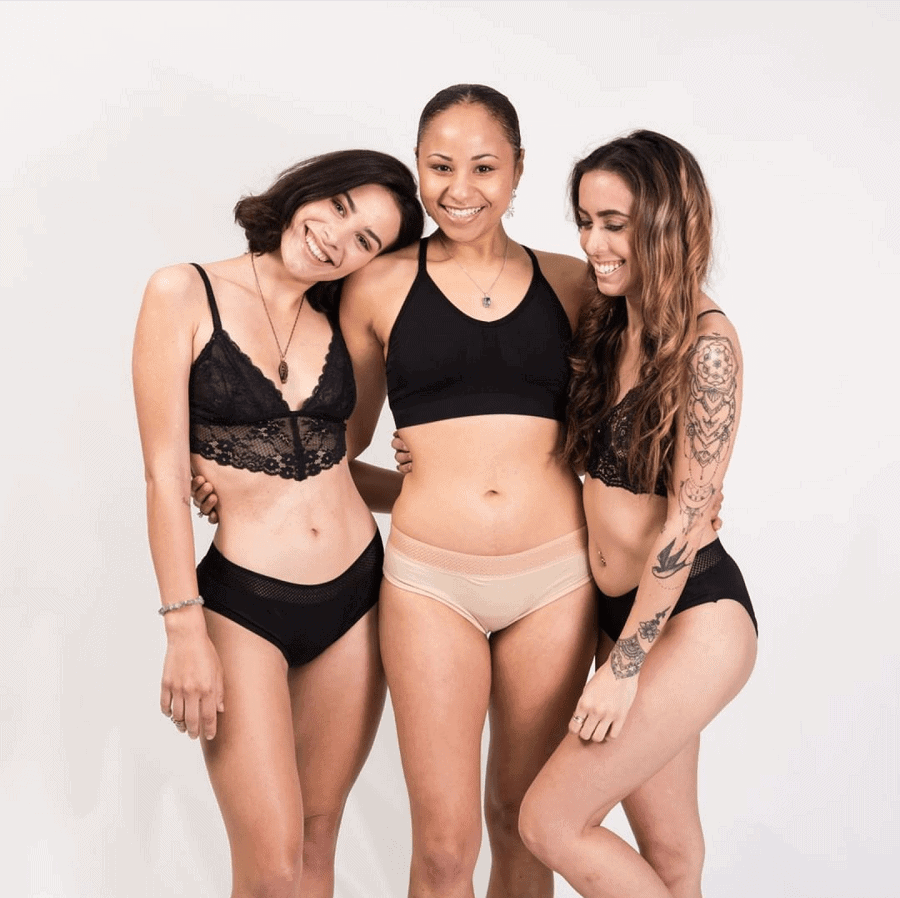
…
Flux Undies (UK) – A few different styles made from Tencel fabric (all in black). Ships worldwide.

…
Knix (Canada) – a good range of colours (with some patterned fabric) and styles. Fabric is polyester. Ships worldwide.
W: knix.com
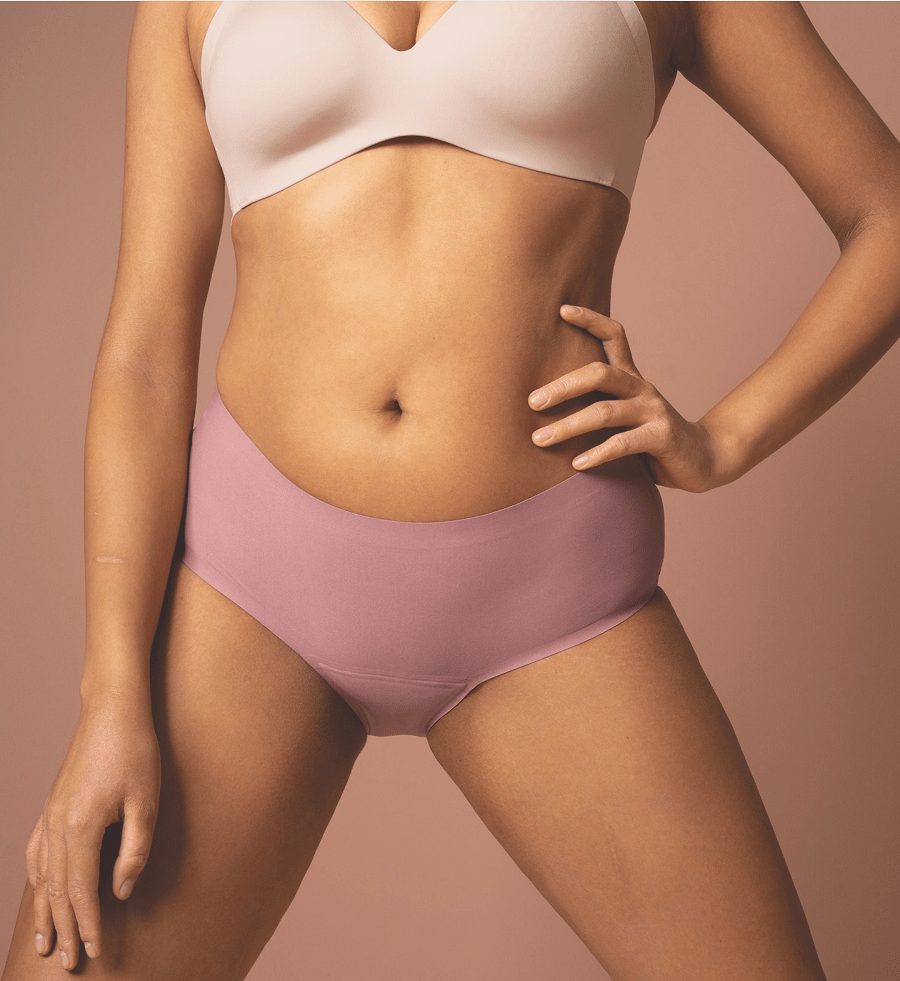
…
Modibodi (Australia) – a large range of styles and colours, including a range of activewear, maternity wear and swimwear. Their range is made from bamboo fabric. Most of their underwear uses merino wool in the gusset layer, but they have a smaller vegan range.
W: modibodi.com
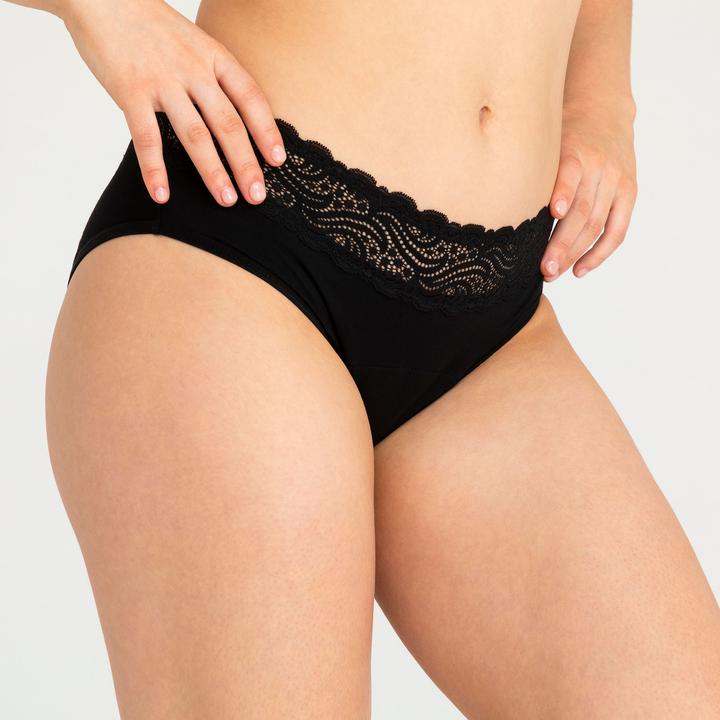
…
Modibodi (UK) – a large range of styles and colours, including a range of activewear, maternity wear and swimwear. Their range is made from bamboo fabric. Most of their underwear uses merino wool in the gusset layer, but they have a small vegan range.
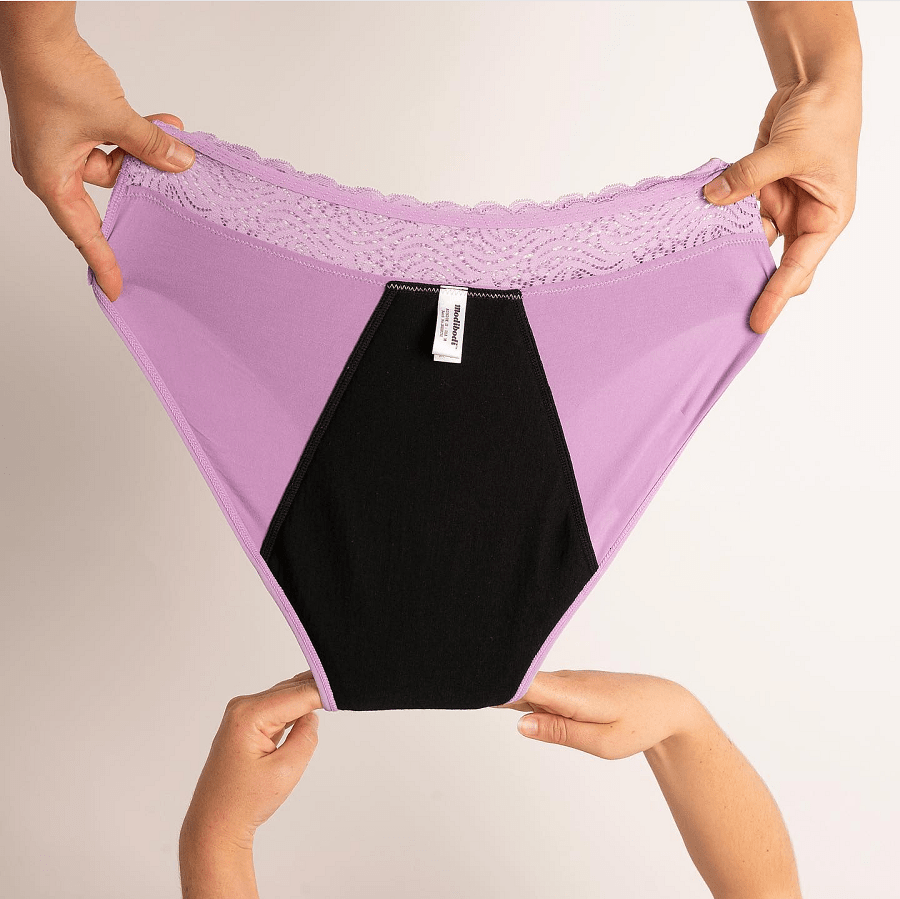
…
Thinx (USA) – a very popular American brand with a great range of styles and colours. Thinx offers a large vegan range; they also have some organic cotton products. Ships worldwide.
W: shethinx.com
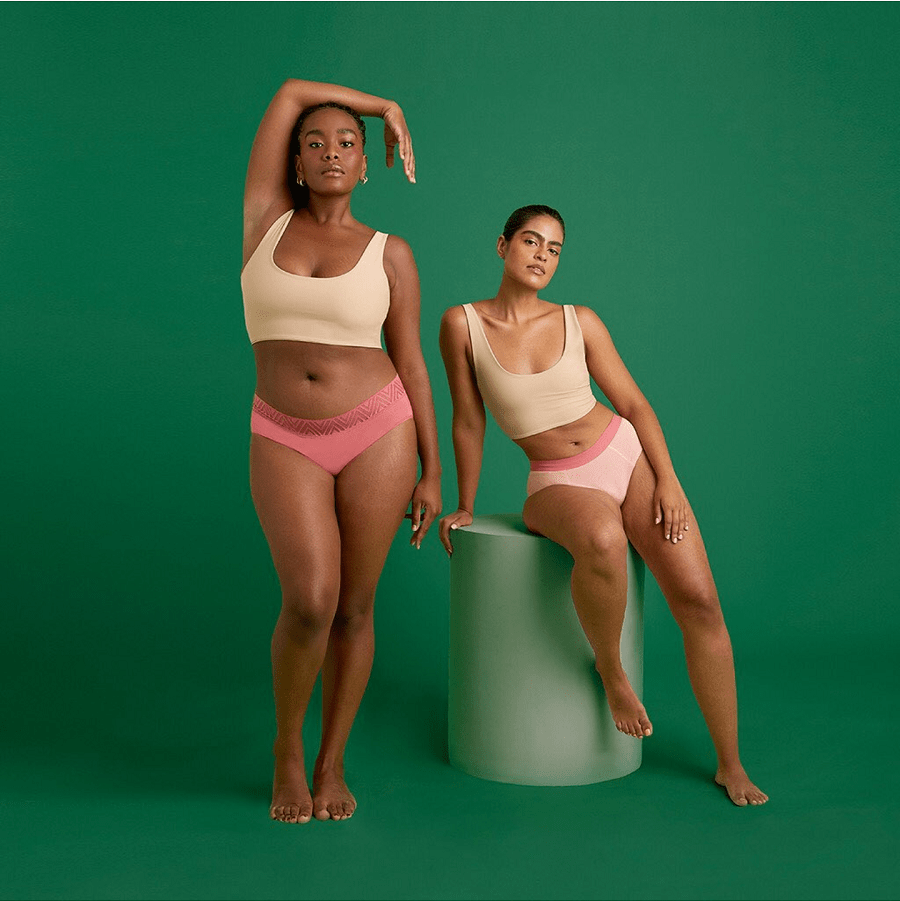
…
WUKA (UK) – have a small range made using sustainable fabrics. Their low flow and heavy flow underwear (only available in black) uses carbon neutral Lenzing modal fabric, and their medium flow underwear (in black and grey) is certified organic cotton. Ships worldwide.
W: wuka.co.uk
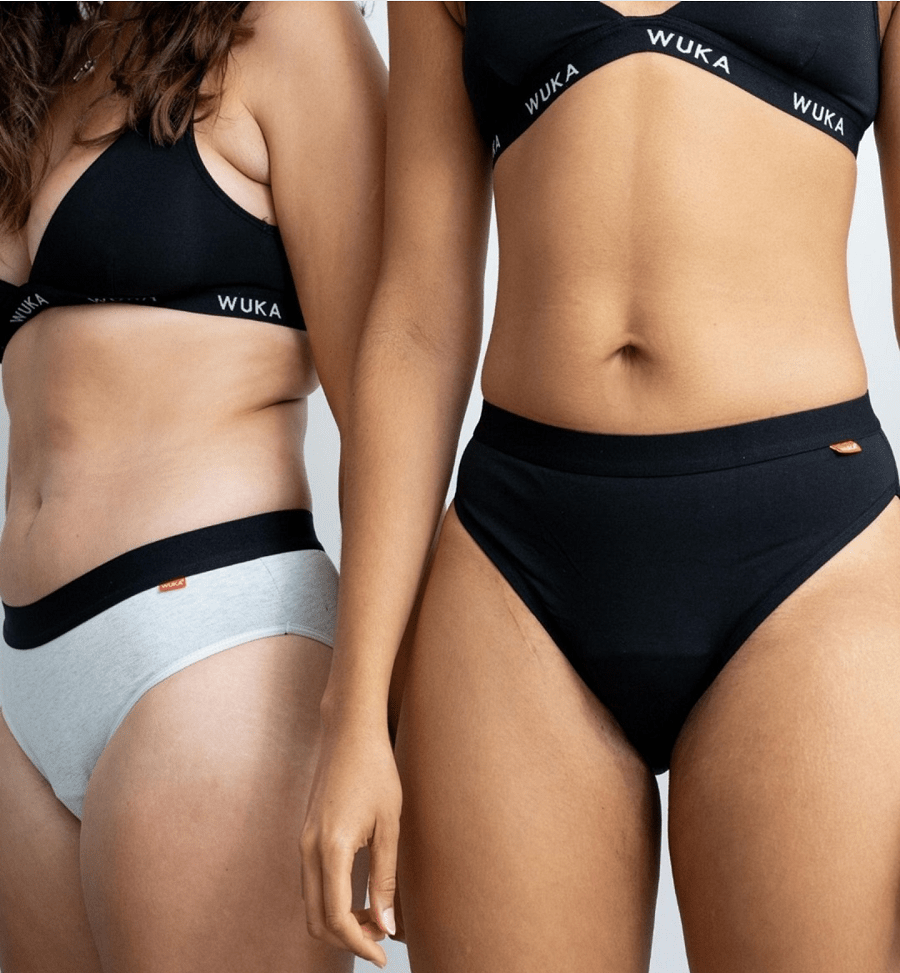
Now I’d love to hear from you! If you have any experiences – good or bad – with particular brands or products we’d love for you to share. Any great brands I’ve missed off the list? Any questions about how they work? Anything else to add? Please share your thoughts below!
[leadpages_leadbox leadbox_id=1429a0746639c5] [/leadpages_leadbox]
This post contains some affiliate links. What this means is, if you click through a link and choose to make a purchase, I may be compensated a small amount at no extra cost to you. I only recommend products and brands who are committed to sustainability and quality, because my priority is always you, the reader.

